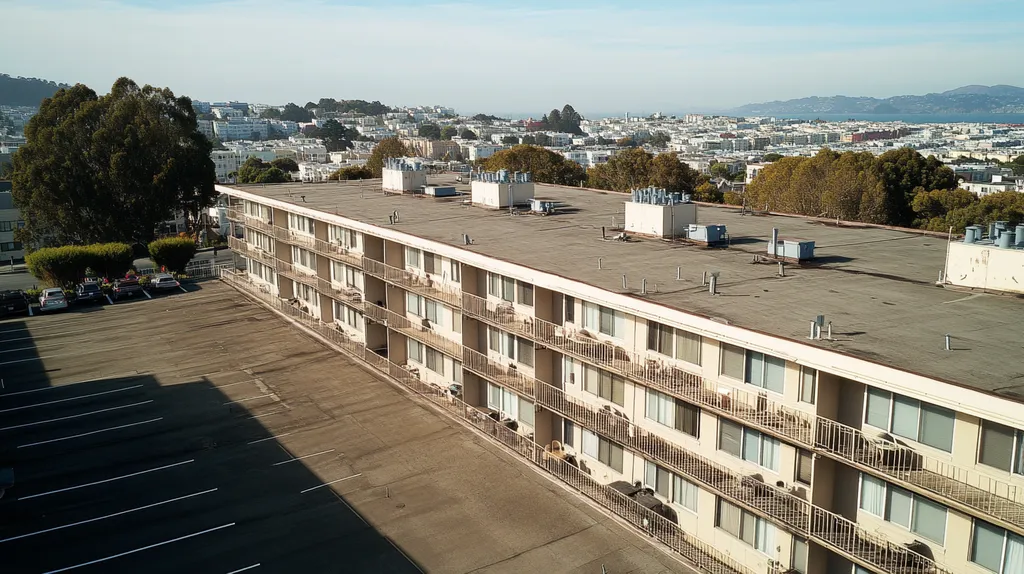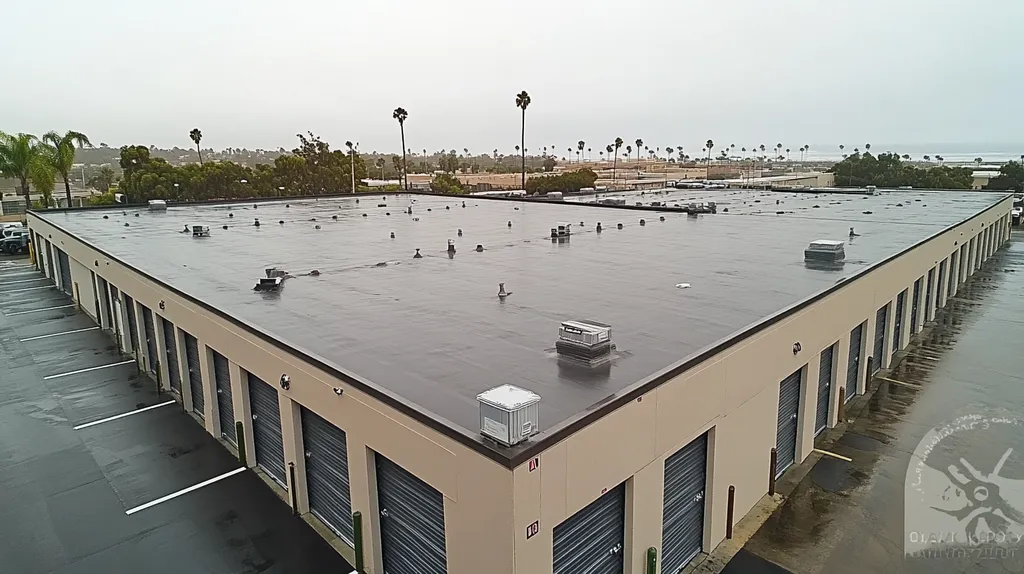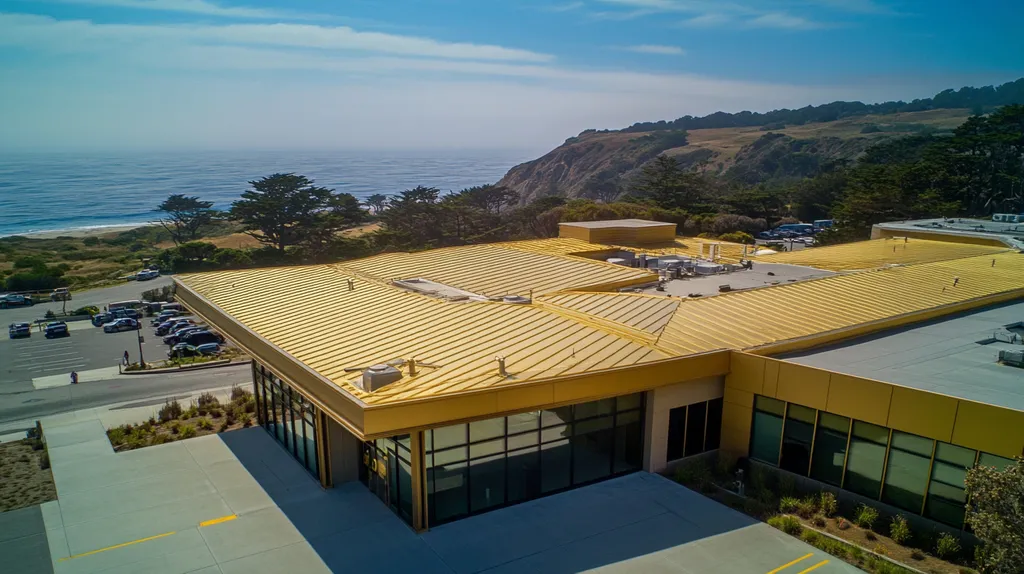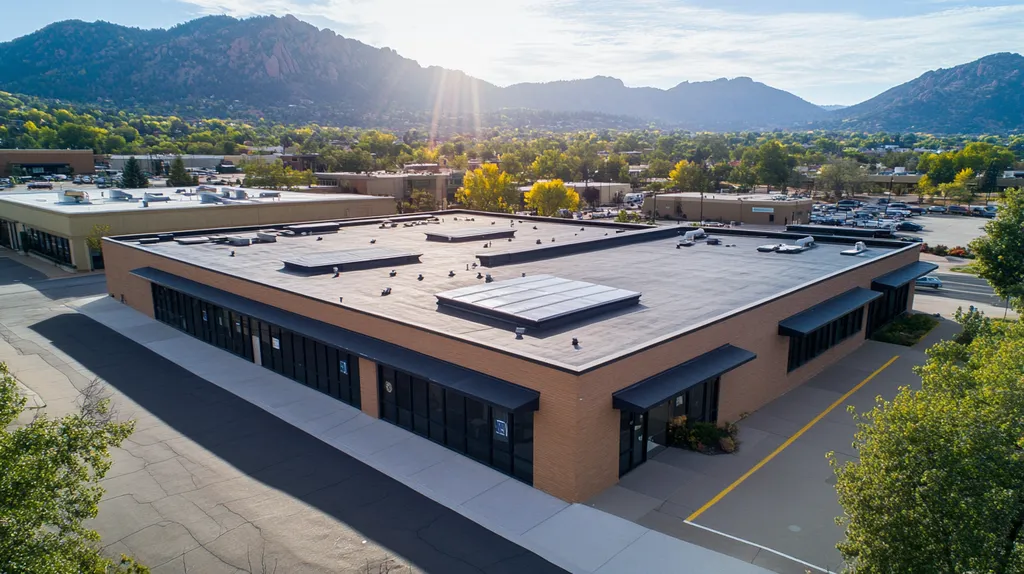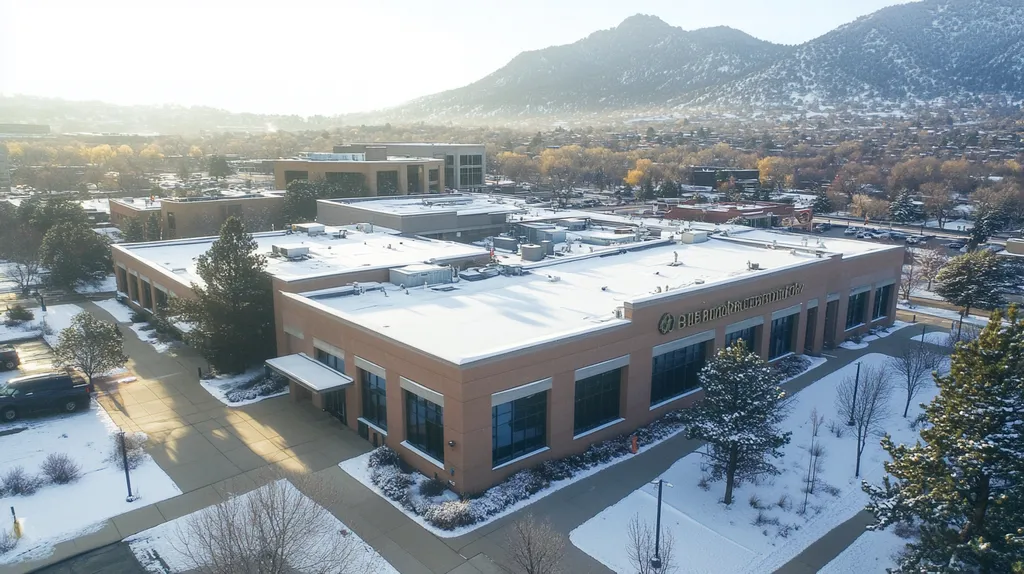Welcome to today’s Battle Royale featuring two roofing heavyweights: “Polyurea Coatings” in the east corner versus “Elastomeric Sealants” in the west!
Tonight’s showdown pits these contenders against each other across six punishing rounds designed to test every aspect of their performance for Industrial Roof Coating Repair.
At stake? Millions in potential costs, decades of building protection, and the critical performance demands of modern commercial and industrial facilities.
Our professional judging panel will evaluate each round on technical merit, real-world performance, and value delivery. After all six rounds, we’ll declare our ultimate champion.
Ladies and gentlemen, facility managers and building owners… it’s time to rumble!
ROUND 1: INITIAL COSTS & INSTALLATION
In today’s industrial environment, roof coating failures can cascade into catastrophic operational disruptions. Recent industry data shows that unexpected roof repairs cost U.S. manufacturers an average of $3.80 per square foot in production losses alone, making the initial choice between polyurea coatings and elastomeric sealants a critical business decision.
Material Expenses
Elastomeric sealants offer an attractive entry point at $1.50 to $3.00 per square foot for materials. These fluid-applied membranes provide basic waterproofing capabilities while maintaining elastic properties that accommodate substrate movement. (source: Lexis Coatings)
Polyurea coatings command premium pricing, typically ranging from $4.00 to $7.00 per square foot. This higher cost reflects their advanced chemical composition and superior performance characteristics.
While the initial price difference is substantial, the total cost equation must factor in application frequency. Elastomeric solutions often require reapplication every 5-7 years, while polyurea systems can last 15-20 years under similar conditions.
ADVANTAGE: Elastomeric Sealants
Installation Complexity
Polyurea applications demand specialized equipment and highly trained technicians. The precise temperature and humidity controls required during installation can increase labor costs and project complexity.
Elastomeric sealants offer more forgiving application parameters. Their standard spray or roller application methods allow for installation by experienced maintenance teams, reducing specialized labor requirements.
However, proper film thickness and even coverage remain critical for both systems. Incorrect application of either coating type can lead to premature failure and costly repairs.
The simplified installation process of elastomeric systems provides a clear operational advantage, particularly for facilities with limited access to specialized contractors.
ADVANTAGE: Elastomeric Sealants
Project Timeline
Polyurea coatings deliver remarkable efficiency in project execution. Their rapid cure time – often less than 30 minutes – allows for same-day return to service and minimal operational disruption.
Elastomeric sealants require significantly longer cure times, typically 24-48 hours between coats. This extended timeline can impact facility operations and increase indirect costs associated with production delays.
Weather sensitivity also affects project scheduling. While both systems require specific conditions for application, polyurea’s quick cure time provides greater flexibility in working around weather constraints.
The dramatic difference in cure times and operational impact makes polyurea the clear winner for timeline considerations.
ADVANTAGE: Polyurea Coatings
ROUND 1 RESULTS: TIE
ROUND 2: DURABILITY & LIFESPAN
Industrial roof coatings face relentless challenges that can compromise facility operations and safety. With weather extremes intensifying and maintenance budgets tightening, the durability gap between coating options has never been more critical. Recent data shows that premature coating failures cost industrial facilities an average of $5.25 per square foot in emergency repairs, making long-term performance a key decision factor.
Durability Under Environmental Stress
Elastomeric coatings offer baseline protection through their ability to expand and contract with substrate movement. Their fluid-applied nature creates a seamless membrane that can restore aged and leaky roofs without complete replacement. (source: Lexis Coatings)
However, elastomeric solutions often struggle with prolonged UV exposure and ponding water. Their physical properties can degrade over time, leading to brittleness and reduced protective capabilities.
Polyurea coatings demonstrate superior resistance to environmental stressors, maintaining their protective properties even under extreme conditions. Their molecular structure resists degradation from UV radiation, chemical exposure, and temperature fluctuations.
ADVANTAGE: Polyurea Coatings
Longevity and Maintenance Requirements
The service life of polyurea coatings typically extends beyond 15 years with minimal maintenance requirements. Their exceptional adhesion and chemical resistance mean fewer repair interventions and lower long-term costs.
Elastomeric systems generally require recoating every 5-7 years under optimal conditions. Their maintenance demands increase significantly in areas with severe weather patterns or high industrial emissions.
The stark contrast in service life expectations and maintenance requirements makes polyurea the clear choice for facilities prioritizing long-term performance.
ADVANTAGE: Polyurea Coatings
Impact Resistance and Repair Requirements
Polyurea’s superior tensile strength and elasticity provide exceptional resistance to physical impacts. These coatings can withstand foot traffic, falling objects, and mechanical stress without compromising their protective barrier.
Elastomeric sealants show greater vulnerability to mechanical damage. Their softer composition makes them more susceptible to punctures and tears, potentially requiring more frequent localized repairs.
When considering the ongoing costs of repairs and the risk of coating failure, polyurea’s robust physical properties deliver superior value.
ADVANTAGE: Polyurea Coatings
ROUND 2 WINNER: Polyurea Coatings
ROUND 3: PERFORMANCE FACTORS
Industrial roof coating performance directly impacts facility operations, energy efficiency, and asset protection. Recent industry analysis shows that inadequate coating performance can increase energy costs by up to 20% and accelerate structural deterioration. With extreme weather events increasing in frequency, the stakes for selecting high-performance coating solutions have never been higher.
Chemical and UV Resistance
Industrial facilities face constant exposure to harsh chemicals, pollutants, and intense UV radiation that can rapidly degrade roofing materials. Industrial roof coatings are high-performance, liquid-applied membranes designed to protect industrial roofing systems from environmental damage, wear and tear, and structural degradation. (source: Rooftop and Surface Solutions)
Polyurea coatings demonstrate exceptional resistance to chemical exposure, maintaining their structural integrity even when exposed to industrial solvents, acids, and petrochemicals. Their advanced molecular structure provides superior UV stability, preventing degradation from prolonged sun exposure.
Elastomeric sealants offer basic chemical resistance but can break down more quickly under sustained chemical exposure. Their UV resistance varies significantly by formulation, with some products showing noticeable deterioration within 3-5 years of installation.
ADVANTAGE: Polyurea Coatings
Water Resistance and Vapor Permeability
Water infiltration represents one of the most significant threats to industrial roofing systems. Polyurea coatings create an impermeable barrier that prevents water penetration while maintaining appropriate vapor transmission rates.
Their seamless application eliminates potential weak points, providing consistent protection across the entire roof surface. The rapid cure time also minimizes the risk of rain damage during installation.
Elastomeric sealants can provide effective water resistance initially but may develop issues with ponding water over time. Their slower cure time increases vulnerability to installation-phase water damage, potentially compromising long-term performance.
ADVANTAGE: Polyurea Coatings
Thermal Performance and Energy Efficiency
Modern industrial facilities face mounting pressure to improve energy efficiency and reduce cooling costs. Polyurea coatings offer excellent thermal stability across extreme temperature ranges, helping maintain consistent interior temperatures.
Their reflective properties and thermal resistance contribute to significant energy savings, particularly in warm climates. The dense molecular structure also prevents heat transfer through the roof assembly.
Elastomeric sealants provide comparable reflective properties but may lose effectiveness as they age and accumulate dirt. Their thermal performance can degrade more quickly, especially in areas with dramatic temperature fluctuations.
ADVANTAGE: Polyurea Coatings
ROUND 3 WINNER: Polyurea Coatings
ROUND 4: MAINTENANCE REQUIREMENTS
Effective maintenance strategies directly impact both operational costs and facility protection. Industry data reveals that inadequate maintenance protocols lead to premature coating failures, costing facilities an average of $2.75 per square foot in emergency repairs annually. As weather patterns become more extreme and maintenance budgets tighten, understanding the maintenance requirements of different coating systems becomes increasingly critical.
Routine Inspections
Industrial roof coatings are high-performance, liquid-applied membranes designed to protect industrial roofing systems from environmental damage, wear and tear, and structural degradation. Regular inspections play a crucial role in maintaining their protective capabilities and extending service life. (source: Rooftop and Surface Solutions)
Polyurea coatings require semi-annual inspections focused primarily on mechanical damage and seam integrity. Their monolithic application minimizes potential failure points, simplifying the inspection process and reducing the likelihood of overlooked issues.
Elastomeric sealants demand quarterly inspections to monitor for UV degradation, substrate movement, and coating separation. Their vulnerability to environmental stressors necessitates more frequent and detailed examination protocols.
ADVANTAGE: Polyurea Coatings
Cleaning and Debris Management
Polyurea’s dense molecular structure creates a smooth, non-porous surface that naturally resists dirt accumulation. Basic pressure washing twice annually typically maintains optimal performance, with minimal risk of coating damage during cleaning.
Elastomeric surfaces tend to develop a tacky finish that attracts and holds airborne contaminants. This characteristic requires more aggressive cleaning methods and increases the risk of coating damage during maintenance.
The superior self-cleaning properties and durability of polyurea systems significantly reduce maintenance labor requirements and associated costs.
ADVANTAGE: Polyurea Coatings
Repair Protocols
When damage occurs, polyurea coatings allow for localized repairs without compromising the integrity of surrounding areas. Their chemical composition enables excellent adhesion between old and new material, simplifying repair procedures.
Elastomeric repairs often require larger work areas to ensure proper blending and adhesion. Their sensitivity to environmental conditions during application can complicate repair timing and execution.
The simplified repair requirements and superior repair bond strength of polyurea systems provide clear advantages for long-term maintenance efficiency.
ADVANTAGE: Polyurea Coatings
ROUND 4 WINNER: Polyurea Coatings
ROUND 5: SUSTAINABILITY CREDENTIALS
Environmental responsibility has become a critical factor in industrial roofing decisions, driven by increasingly strict regulations and rising energy costs. Recent data shows that sustainable roofing solutions can reduce facility energy consumption by up to 30% while meeting growing ESG (Environmental, Social, and Governance) requirements. As climate challenges intensify, the environmental impact of roofing choices carries both immediate and long-term consequences.
Environmental Impact
Industrial roof coatings are high-performance, liquid-applied membranes designed to protect industrial roofing systems from environmental damage, wear and tear, and structural degradation. Their environmental footprint extends from manufacturing through installation and eventual disposal. (source: Rooftop and Surface Solutions)
Polyurea coatings demonstrate exceptional environmental credentials through their low VOC emissions and minimal waste generation during application. Their extended lifespan significantly reduces the environmental impact of manufacturing and disposal cycles.
Elastomeric sealants typically require more frequent replacement, generating additional waste and increasing their lifetime environmental impact. While many formulations offer low VOC options, their shorter service life offsets these benefits.
ADVANTAGE: Polyurea Coatings
Energy Performance
Modern industrial facilities face mounting pressure to reduce their carbon footprint through improved energy efficiency. Roof coatings play a crucial role in managing heat transfer and reducing HVAC loads.
Polyurea coatings provide superior thermal resistance and maintain their reflective properties longer than alternative solutions. Their consistent performance across extreme temperature ranges delivers predictable energy savings throughout their service life.
Elastomeric sealants offer initial energy benefits through reflective properties but often show degraded performance within the first few years. Their thermal resistance typically diminishes faster, particularly in severe weather conditions.
ADVANTAGE: Polyurea Coatings
Material Lifecycle
The complete lifecycle assessment of roofing materials includes raw material sourcing, manufacturing processes, installation requirements, and end-of-life disposal options. These factors significantly impact a product’s overall sustainability profile.
Elastomeric sealants often incorporate recycled content and can be more easily recycled at end-of-life. Their simpler chemical composition supports more sustainable manufacturing processes.
Polyurea coatings present challenges in recycling and typically require more energy-intensive manufacturing. However, their extended service life partially offsets these disadvantages.
ADVANTAGE: Elastomeric Sealants
ROUND 5 RESULTS: TIE
ROUND 6: SPECIALIZED APPLICATIONS
In today’s demanding industrial environments, specialized roofing applications face unprecedented challenges. Recent industry data shows that 40% of industrial roof failures occur in areas with unique environmental stressors or operational demands. With chemical exposure, extreme temperatures, and demanding performance requirements becoming more common, selecting the right coating system for specialized applications has never been more critical.
Substrate Compatibility
Industrial roof coatings are high-performance, liquid-applied membranes designed to protect industrial roofing systems from environmental damage, wear and tear, and structural degradation. Their effectiveness largely depends on their ability to bond with various substrate materials and maintain adhesion under stress. (source: Rooftop and Surface Solutions)
Polyurea coatings demonstrate exceptional versatility across multiple substrate types, including metal, concrete, and modified bitumen. Their rapid cure time and strong molecular bonding create lasting adhesion even on challenging surfaces.
Elastomeric sealants show limitations with certain substrates, particularly those prone to movement or moisture retention. Their slower cure time can lead to adhesion issues in less-than-ideal conditions.
ADVANTAGE: Polyurea Coatings
High-Traffic Areas
Industrial rooftops often serve as platforms for mechanical equipment maintenance and routine inspections. These high-traffic zones require exceptional wear resistance and impact protection.
Polyurea coatings excel in these demanding conditions, offering superior resistance to punctures, tears, and abrasion. Their high tensile strength and flexibility maintain integrity even under frequent foot traffic and equipment movement.
Elastomeric sealants typically show faster wear patterns in high-traffic areas. Their softer composition makes them more susceptible to mechanical damage and may require more frequent repairs or reinforcement.
ADVANTAGE: Polyurea Coatings
Critical Environment Protection
Many industrial facilities house sensitive operations requiring strict environmental controls. These critical environments demand coating systems that provide reliable protection against contaminants and temperature fluctuations.
Polyurea coatings create an impermeable barrier that maintains consistent performance in extreme conditions. Their rapid cure time minimizes exposure risks during installation, making them ideal for sensitive environments.
Elastomeric sealants can provide adequate protection but may require multiple coats and longer cure times. This extended application process increases the risk of contamination or environmental control disruption.
ADVANTAGE: Polyurea Coatings
ROUND 6 WINNER: Polyurea Coatings
AND THE WINNER IS…
After six punishing rounds of technical warfare, we have our undisputed Industrial Roof Coating champion – POLYUREA COATINGS with a dominant 4-0-2 victory!
This heavyweight champion dominated the competition through superior durability, exceptional performance characteristics, minimal maintenance requirements, and unmatched capabilities in specialized applications. Its rapid cure time, chemical resistance, and extended service life delivered knockout punches in round after round.
But don’t count elastomeric sealants out completely! When budget constraints are paramount or specialized contractor availability is limited, these versatile contenders still deliver solid protection at a lower initial cost with simpler installation requirements.
IMPORTANT NOTICE: Every facility faces unique challenges shaped by local climate, building design, operational requirements, and environmental factors. This analysis provides general guidance but cannot account for all variables. Property owners and managers should always consult qualified roofing professionals who can evaluate their specific situation and recommend appropriate solutions.
Ladies and gentlemen, in the high-stakes arena of industrial roofing, there’s no substitute for making an informed choice. Whether you go with our champion polyurea or the seasoned elastomeric challenger, victory comes from matching your facility’s specific needs with the right contender’s strengths!
FREQUENTLY ASKED QUESTIONS
Q. What are the initial costs of commercial roof coatings?
A. Initial costs vary significantly between polyurea coatings and elastomeric sealants. Elastomeric sealants range from $1.50 to $3.00 per square foot, providing a budget-friendly option. In contrast, polyurea coatings, priced between $4.00 and $7.00 per square foot, offer superior performance but require a higher initial investment.
Q. How do durability and lifespan compare in industrial roof options?
A. Polyurea coatings typically last over 15 years with minimal maintenance, while elastomeric sealants need recoating every 5-7 years. This difference in longevity underscores the importance of considering long-term performance when selecting a coating solution for your industrial roof.
Q. What performance factors impact commercial roof coating choices?
A. Key performance factors include chemical and UV resistance, water impermeability, and thermal efficiency. Polyurea coatings outperform elastomeric sealants in these areas, providing better protection against harsh environmental conditions and maintaining energy efficiency over time, which is vital for commercial property owners.
Q. What are the maintenance requirements for commercial roofs?
A. Polyurea coatings require semi-annual inspections and minimal cleaning, while elastomeric sealants need quarterly checks and more cleaning due to dirt accumulation. The ease of maintenance associated with polyurea not only reduces labor costs but also drastically lowers the risk of significant damage if inspections are delayed.
Q. How do sustainability credentials factor into roofing decisions?
A. Sustainability credentials are crucial as they address environmental impact, energy efficiency, and material lifecycle. Polyurea coatings, with lower VOC emissions and extended lifespan, offer significant sustainability advantages over elastomeric sealants, which tend to require more frequent replacement and thus generate more waste over time.
Q. What specialized applications benefit from polyurea coatings?
A. Specialized applications such as high-traffic areas and environments requiring strict temperature control benefit greatly from polyurea coatings. Their superior adhesion and durability ensure reliable performance in these challenging conditions, reducing the likelihood of failures compared to elastomeric sealants that may struggle under similar stress.
Q. What should I consider when choosing between coating types?
A. Consider initial costs, longevity, environmental conditions, and maintenance requirements. Evaluate how often each type requires reapplication and its overall performance under specific stresses. Aligning these factors with your operational needs will help you choose the right solution to protect your commercial roof investment effectively.

